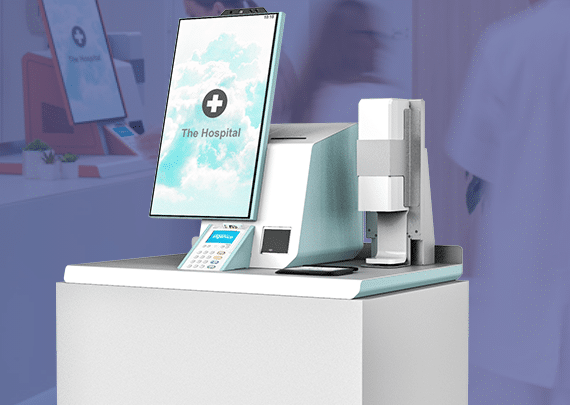Patient Check-In Kiosk and Epic Welcome Kiosk Olea Kiosks May 2021
Click for full size — Kaiser Patient Check-in Epic original model.
Click for full size Kaiser Check-In Kiosk
Editors Note: From Kiosk Industry — Olea Kiosks takes a major step towards expanding the healthcare patient check-in kiosk and Patient Registration kiosk market along with Telehealth and Telecare by adding James Walker to their sales team. Walker is an expert in Epic Welcome kiosk which dovetails perfectly with Olea Kiosks’ unparalleled engineering. Olea Kiosks is the major provider for Kaiser Permanente which is a primary baseline for Epic Welcome Kiosks and accessibility. Johns Hopkins, Cedars Sinai and Novant to list some others.
August 2021 Latest Enhanced Design Available! — New product! ADA height adjustable base for our Austin series kiosks. This moves 12” at the push of a button and includes an optional printer. Aimed at Healthchare for full ADA height compliance of ALL of the hardware in the kiosk. This base can be used in other setting like ticketing or QSR. We’ve also upgraded the Austin with an automated UV-C sanitizing light system. This is a true industrial grade bulb not LED’s that others are using.
Olea Kiosks®, Inc. Adds Industry Veteran James Walker to Sales Team
LOS ANGELES, Calif., May 12, 2021 (SEND2PRESS NEWSWIRE) — Olea Kiosks®, Inc., a visionary provider of innovative self-service kiosk solutions, today announced the growth of its sales team by adding veteran healthcare sales executive James Walker.
James joins Olea following ten years of self-service kiosk experience in the healthcare check-in space, most recently as channel director. With a comprehensive background combining sales and marketing, operations, and process improvement, he brings a broader perspective to the needs of his clients. Walker joins Olea as the company continues to grow its presence in healthcare as the industry expands its digital transformation.
“Having spent a good deal of time working through patient check-in, I’m excited about the opportunity to improve the entire patient experience and looking for opportunities to remove points of friction across the patient journey,” said Walker. “I see the difference self-service technology has made, and with the addition of telehealth and telemedicine applications, access to healthcare will become so much easier for people experiencing healthcare challenges,” he added.
“2021 is a year bringing much change to Olea Kiosks, and that continues with our growth and expansion in select verticals. James will be a real asset to our team with his extensive experience as we grow our presence across healthcare self-service solutions,” CEO Frank Olea explained.
In addition to almost doubling its manufacturing space earlier this year, Olea Kiosks®, Inc. has also strengthened its leadership team, added other additional sales resources, and expanded its customer experience team.
About Olea Kiosks®, Inc.
Olea Kiosks, Inc. is a self-service kiosk solution provider for the attractions and entertainment, healthcare and hospitality industries. Its technologically advanced, in-house manufacturing, design, and innovation have made it an industry leader. Headquartered in Los Angeles, California, customers include Cedars-Sinai, Kaiser Permanente, Tenet, The Habit Burger Grill, The Empire State Building, Universal Studios, Scientific Games, and Subway.















